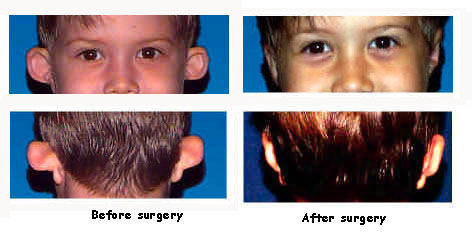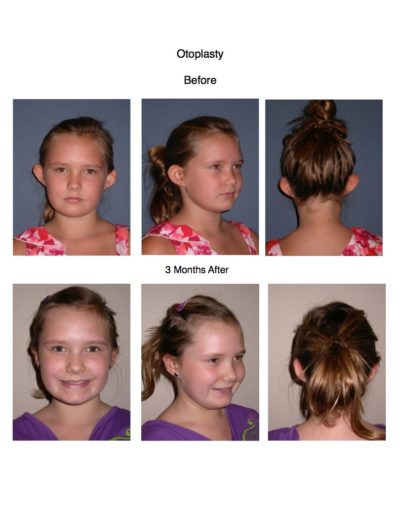 Otoplasty is an operation that is done to improve the appearance of the ears. It is most commonly done for protruding ears, often called “lop” ears or “cup” ears. The condition is often quite troubling to children who often take a great deal of kidding from their peers. Prior to the days when long hair was stylish, otoplasty was a very common operation. Parents seemed quite attuned to the problems faced by children with this condition. When long hair became stylish, the operation lost some of its popularity, and has never seemed to become as popular as in the past. Perhaps with greater awareness, more parents will realize how important this correction can be to their children.
Otoplasty is an operation that is done to improve the appearance of the ears. It is most commonly done for protruding ears, often called “lop” ears or “cup” ears. The condition is often quite troubling to children who often take a great deal of kidding from their peers. Prior to the days when long hair was stylish, otoplasty was a very common operation. Parents seemed quite attuned to the problems faced by children with this condition. When long hair became stylish, the operation lost some of its popularity, and has never seemed to become as popular as in the past. Perhaps with greater awareness, more parents will realize how important this correction can be to their children.
The operation is usually done during childhood, and this is ideal since the cartilage is still quite soft and malleable. We generally recommend that the procedure be done shortly before the child enters school. Adults also request this type of surgery having been denied the opportunity to have the deformity corrected during childhood. In these cases, the technique may be modified slightly to allow for softening of the cartilage in addition to reshaping. A laser is used to soften and shape the cartilage that is then sutured in the proper position. The otoplasty operation consists of reshaping the cartilage of the ear, occasionally removing some cartilage, and placement of the ears in proper relationship to the face and head. It produces generally good cosmetic results. Even when results are occasionally imperfect, it is often possi ble to make revisions successfully.
ble to make revisions successfully.
The operation is carried out under either local or general anesthesia depending on the age and preference of the patient. There is relatively little pain associated with otoplasty and recovery is rapid. The incisions are made behind the ear where they are not noticeable. Absorbable sutures are used to close the skin, making suture removal unnecessary.
A wraparound bandage is worn for a few days to protect the ears, and is worn at night until healing is complete. Most adult patients can return to work within a few days of surgery and children can return to school within a week. Trauma to the ears must be avoided for several weeks until healing is complete, and so a protective wrap is advisable during vigorous activity for at least three weeks.
Complications are uncommon. The major risk is postoperative bleeding. If this occurs, prompt treatment is required to prevent infection or abnormal scarring which can lead to thickening of the ear. Absolute symmetry of the ears is a goal that is rarely achieved. However, it is natural for the two ears to be slightly different in shape or position. Occasionally, after healing, the position of the ear can change, although the results of surgery are usually permanent. Rarely, the sutures can be pulled loose before healing which could result in failure of the operation.

